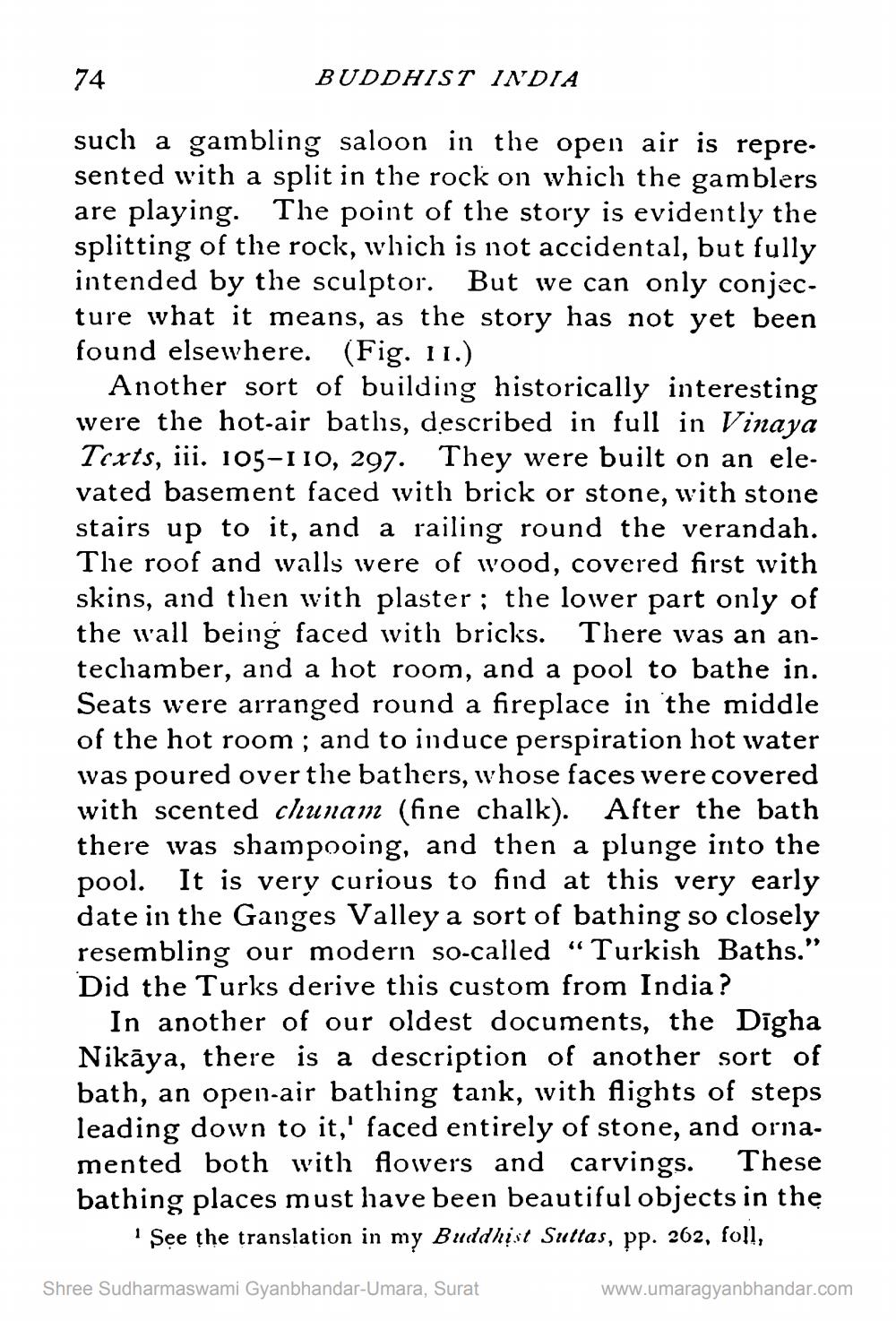________________
74
BUDDHIST INDIA
such a gambling saloon in the open air is repre. sented with a split in the rock on which the gamblers are playing. The point of the story is evidently the splitting of the rock, which is not accidental, but fully intended by the sculptor. But we can only conjecture what it means, as the story has not yet been found elsewhere. (Fig. 11.)
Another sort of building historically interesting were the hot-air bathis, described in full in Vinaya Texts, iii. 105-110, 297. They were built on an ele. vated basement faced with brick or stone, with stone stairs up to it, and a railing round the verandah. The roof and walls were of wood, covered first with skins, and then with plaster; the lower part only of the wall being faced with bricks. There was an antechamber, and a hot room, and a pool to bathe in. Seats were arranged round a fireplace in the middle of the hot room; and to induce perspiration hot water was poured over the bathers, whose faces were covered with scented chunam (fine chalk). After the bath there was shampooing, and then a plunge into the pool. It is very curious to find at this very early date in the Ganges Valley a sort of bathing so closely resembling our modern so-called “Turkish Baths.” Did the Turks derive this custom from India ?
In another of our oldest documents, the Digha Nikāya, there is a description of another sort of bath, an open-air bathing tank, with flights of steps leading down to it,' faced entirely of stone, and orna. mented both with flowers and carvings. These bathing places must have been beautiful objects in the
See the translation in my Buddhist Suttas, pp. 262, foll,
Shree Sudharmaswami Gyanbhandar-Umara, Surat
www.umaragyanbhandar.com




